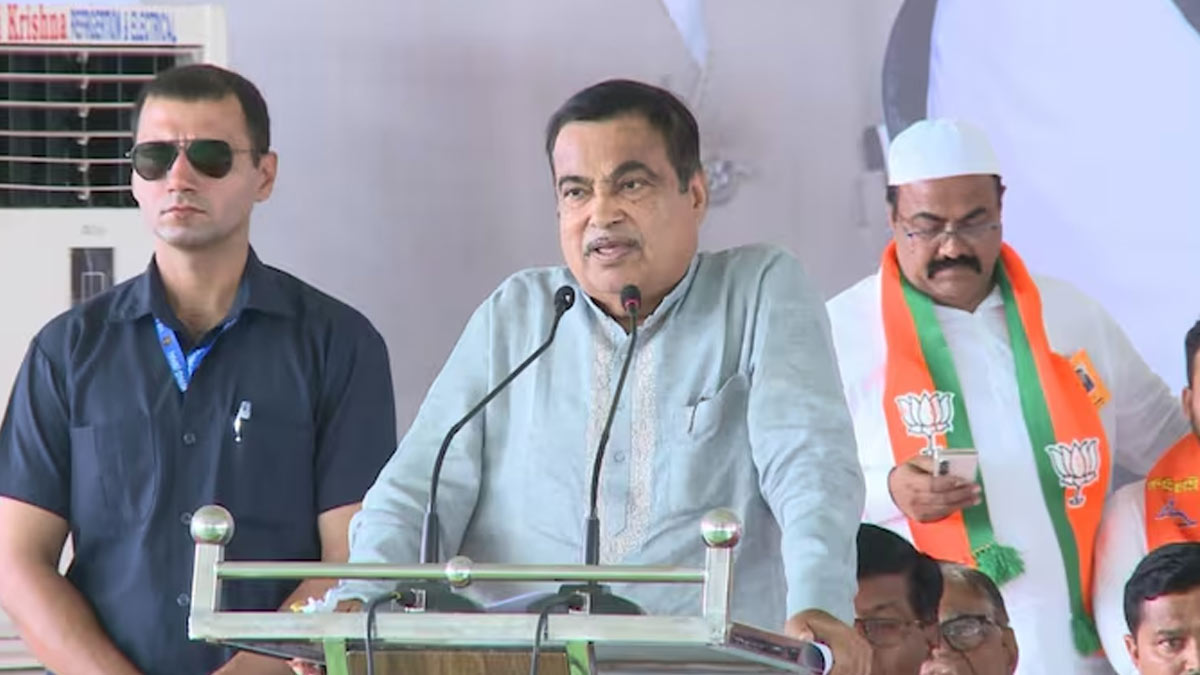
The recent collapse of Union Minister Nitin Gadkari during a public address in Maharashtra has thrust the issue of heat safety into the spotlight. Amid scorching temperatures, Gadkari's fainting spell serves as a stark reminder of the dangers posed by extreme heat, particularly in outdoor settings. As the video of the incident circulated widely, it prompted concerns about the health risks associated with prolonged exposure to high temperatures.
Table of Content:-
In the wake of this event, there is a pressing need to revisit strategies for coping with extreme heat and ensuring the well-being of individuals, especially those who may be more vulnerable. This incident underscores the importance of proactive measures to mitigate heat-related risks and emphasises the critical role of public awareness and preparedness in safeguarding against heat-related emergencies. In this context, understanding the implications of extreme heat and implementing effective preventive measures become imperative for promoting heat safety and protecting public health.
View this post on Instagram
Understanding Heat-Related Risks
Extreme heat poses significant health risks, particularly for vulnerable groups such as the elderly, infants, and those with pre-existing medical conditions. Dehydration, heat exhaustion, and heatstroke are common heat-related ailments that can have serious consequences if not addressed promptly.
Strategies for Coping with Extreme Heat
To mitigate the risks associated with extreme heat, it is essential to adopt preventive measures and stay informed. Here are some practical strategies, suggested by Dr J Harikishan, Senior General Physician, Kamineni Hospitals, Hyderabad.
Stay Cool
- Seek shelter in air-conditioned spaces whenever possible.
- Utilise fans and cooling devices to lower indoor temperatures.
- Wear lightweight and breathable clothing to facilitate heat dissipation.
- Take cool showers or baths to lower body temperature.
Stay Hydrated
- Drink plenty of water throughout the day, even if you do not feel thirsty.
- Carry a refillable water bottle to ensure hydration on the go.
- Avoid excessive consumption of caffeinated or alcoholic beverages, as they can contribute to dehydration.
Plan Ahead
- Limit outdoor activities during peak heat hours, typically between 10 AM and 4 PM.
- Monitor weather forecasts and heat advisories to anticipate extreme heat events.
- Stock up on essential supplies, including food, water, and medications, to minimise the need for outdoor excursions.
Check In With Others
- Keep in touch with friends, family members, and neighbours, particularly those who may be more vulnerable to heat-related illnesses.
- Offer assistance to individuals who may require additional support, such as transportation to cooler locations or access to hydration resources.
- Be vigilant for signs of heat-related distress in yourself and others, including dizziness, nausea, and rapid heartbeat.
Bottomline: Prioritize Heat Safety
As temperatures continue to rise, prioritising heat safety is paramount to safeguarding health and well-being. By following simple yet effective strategies, such as staying cool, staying hydrated, planning ahead, and checking in with others, individuals can minimise the risks associated with extreme heat and ensure a safe and enjoyable summer season. Remember, proactive measures can make all the difference in preventing heat-related emergencies and promoting overall health and resilience in the face of rising temperatures.
Also watch this video
How we keep this article up to date:
We work with experts and keep a close eye on the latest in health and wellness. Whenever there is a new research or helpful information, we update our articles with accurate and useful advice.
Current Version